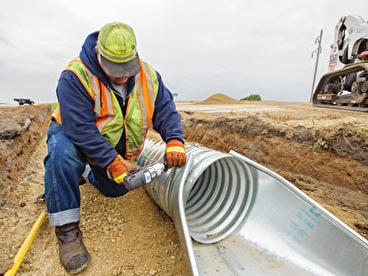Experienced Tree Removal for Building Safety
Experienced Tree Removal for Building Safety
Blog Article
Grasping Culvert Setup: Boost Your Land Drainage Efforts
Reliable land drainage is a vital component of successful agricultural and framework tasks. Culverts play a substantial role in handling water circulation and protecting against disintegration, making their appropriate installation vital. From selecting the ideal materials to implementing best methods, mastering culvert setup can substantially enhance the performance and long life of your land water drainage system. By comprehending the ins and outs of culvert installation, you can enhance your water drainage initiatives and ensure lasting land use practices.
Value of Culvert Setup
Making sure appropriate culvert installment is vital for preserving effective land drainage systems. Culverts play a critical role in managing water flow, preventing erosion, and maintaining the architectural stability of roadways, bridges, and other facilities. Correct installation of culverts helps to channel water away from roads and buildings, minimizing the danger of flooding and water damages. In addition, well-installed culverts help in stopping sediment accumulation, which can result in blockages and reduced water flow.
Correct Sizing and Placement

Correct placement of culverts is just as essential. Culverts must be placed at the least expensive point of the area requiring drainage to ensure efficient water flow.
Material Choice Tips
Choosing the appropriate materials is paramount in ensuring the longevity and capability of culverts for efficient land water drainage systems. When choosing materials for culvert installment, it is critical to take into consideration factors such as the water flow rate, dirt make-up, and ecological conditions of the site.
One of the most usual materials used for culverts is corrugated steel. Concrete culverts are perfect for areas susceptible to corrosion or when a much longer solution life is preferred.
For ecologically sensitive locations, plastic culverts might be favored. Plastic culverts are light-weight, immune to rust, and easy to move and mount. They are also understood for their smooth inside, which assists to maintain effective water circulation. In addition, in locations where natural visual appeals are essential, products like rock or timber can be utilized to build culverts that blend effortlessly into the environments. Ultimately, the selection of product should be based upon a thorough analysis of the details needs and problems of the land drain project.
Installation Strategies and Ideal Practices
Given the crucial relevance of product choice in ensuring the capability and long life of culverts, the installation techniques and finest methods play a critical function in the total success of land drain systems. Correct setup is crucial to avoid problems such as leaks, collapses, or clogs that can compromise the effectiveness of the culvert.

During installation, care has to be taken to line up the culvert appropriately and give proper assistance to stop contortion. Backfilling should be done progressively and compressed in layers to stay clear of gaps and settlement. Appropriate compaction is view it now necessary to protect against moving or sinking of the culvert in time.

Maintenance and Long-Term Care
Implementing a comprehensive upkeep plan is essential for making certain the durability and effective performance of culverts in land drain systems. Regular inspections need to be carried out to look for any type of signs of damage, clogs, or disintegration that might jeopardize the functionality of the culvert. check over here Clearing up particles such as fallen leaves, branches, and debris is important to avoid obstructing and preserve the circulation capacity of the culvert. Plant life control around the culvert area is likewise essential to avoid origins from causing structural damage.
Routine upkeep tasks might include cleansing, fixing joints, strengthening inlet and electrical outlet frameworks, and ensuring proper slope and placement of the culvert. Maintaining comprehensive records of maintenance tasks, evaluations, and fixings is crucial for tracking the problem of the culvert over time and preparing future upkeep requirements.
Final Thought
Finally, grasping culvert setup is important for effective land drainage. Correct sizing, positioning, material choice, setup techniques, and upkeep are crucial factors to think about. By adhering to best practices and implementing long-term treatment strategies, landowners can increase their water drainage efforts and make sure the long life and capability of their directory culverts. It is necessary to focus on these elements to stop water damages, disintegration, and various other expensive issues on the property.
Report this page